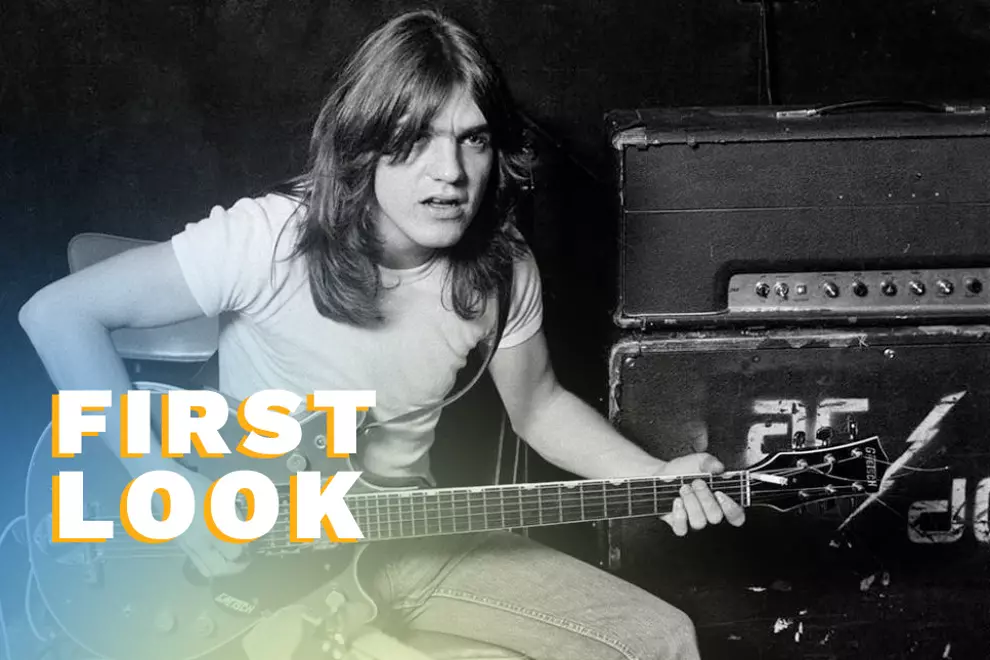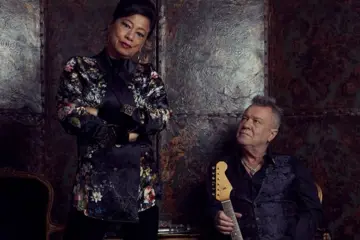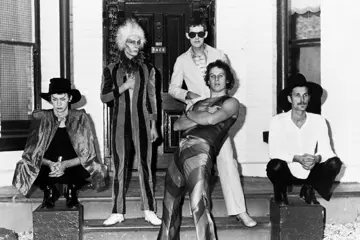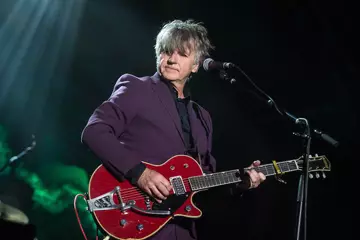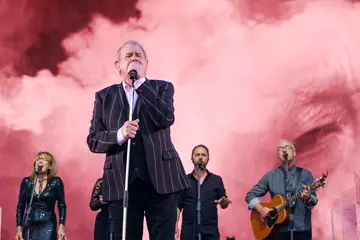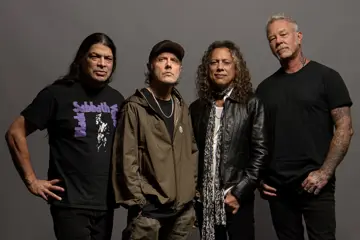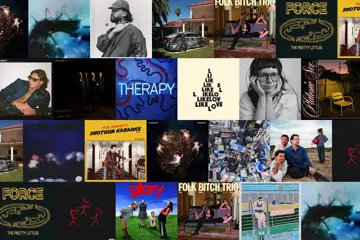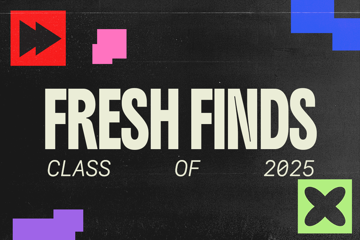 AC/DC
AC/DCChapter 24 - I Won’t Be Able To Do It Anymore
It was Angus who first noticed the changes in his brother. It was early 2008, and he and Malcolm were working on new songs in advance of the band convening at the Warehouse Studio in Vancouver, Canada (owned by rock singer Bryan Adams), to start work on their fifteenth studio album. They hadn’t made a record since 2000’s Stiff Upper Lip, also recorded at the Warehouse, which had been co-produced by brother George. (They’d hoped to work again with "gentleman" Bruce Fairbairn on that album, but the producer had died suddenly in 1999, aged just 49.)
In 2003, in the wake of Stiff Upper Lip, the band signed a new record deal that saw them switch from Atlantic Records to Columbia Records. Columbia was a giant of a label, but also provided AC/DC with some unlikely new peers: Bob Dylan, Billy Joel, Barbra Streisand, Bruce Springsteen and Destiny’s Child among them. The label was projecting that revenue from the band would be somewhere around $50 million over the subsequent five years.
Black Ice, as the new album would be named, wasn’t an easy record to make. Bassist Cliff Williams injured his hand in 2005 and was unable to play for eighteen months. Angus and Malcolm, meanwhile, had begun throwing around song ideas when Angus sensed that something was up with Malcolm — "strange things ... memory things", as he would later describe them.
Angus once told a reporter that he and Malcolm shared what he described as "a psychic thing", an intricate understanding of each other’s nature, especially when they played together, so it was natural that he would be the first to notice any changes in his brother. And the change that Angus noticed was huge. Malcolm knew how to play guitar better than just about anybody in rock, but he was having trouble in the studio. Simple performance issues, guitar basics, were eluding him. He was also forgetful and confused at times, something that Angus had never seen before. Malcolm had always been the organised one in the band.
Don't miss a beat with our FREE daily newsletter
"It was strange," Angus said when he discussed Malcolm’s condition with a reporter from ABC TV’s 7.30 program in 2014. "For the first time I saw him disorganised. That’s when it hit me that something was not right with him."
Malcolm consulted a specialist in the US, whose diagnosis was cerebral atrophy — "shrinkage of the brain", typically a condition of the elderly, rather than of a 55-year-old. He prescribed medication and provided Malcolm with what Angus described as "good care, the best treatment".
There may well have been signs that Malcolm’s health was failing even earlier than 2008. As their tours grew in size and scope, the band were using big (and even bigger) video monitors, but Malcolm was rarely seen on screen; typically it was all about the Angus and Brian show. And on the rare occasions Malcolm did appear, he tended to look slightly disorientated, even a bit bewildered.
When the Black Ice record was finished, another mammoth world tour was set in place: 168 shows comprising eleven legs, starting in Pennsylvania in late October 2008 and slowly winding its way to Bilbao, Spain, for the final show in late June 2010. It was more like a military campaign than a rock-and-roll tour: band and crew would cover 29 countries, play to some five million fans and rake in mind-boggling amounts of money.
But even before the tour began, Angus knew he had to talk with Malcolm, to check that he was physically and mentally ready for such a grind. This was a long and demanding tour, and they hadn’t been on the road since 2001, outside of those few dates with The Rolling Stones in 2003. Was he up for it?
Malcolm’s response was emphatic. "Shit yeah. I’ll keep going until I can't."
Angus knew his brother well enough not to question his commitment. But he also knew what Malcolm was committing to: this wasn’t some quick lap of honour or a hit-and-run promo tour for the new record. Malcolm’s decision to continue was every bit as crucial as the choice they had to make when Bon Scott died.
"Malcolm always wanted to finish what he started," said Angus. "He always had that drive."
For Malcolm’s part, he understood that a lot of people depended on the band, not only fans, but crew and many others. To drop out of a tour, perhaps even cancel the entire shebang, would have dire financial consequences. (Malcolm may have been rich, but he still watched every dollar.) And also, because they hadn’t toured for so long, Malcolm probably felt it important that AC/DC remind the world that they could still bring the noise — and he wanted to be part of that.
Mind you, AC/DC supporters had been doing their own cheerleading during the band’s absence. In 2006, Australian punk rockers Frenzal Rhomb released a song and an album called Forever Malcolm Young (key lyric: "Always Malcolm, never Angus"), while AC/DC had ranked fourth on VH1’s ‘100 Greatest Artists Of Hard Rock’ poll. AC/DC came in at number 72 on a US Rolling Stone poll of ‘The 100 Greatest Artists Of All Time’ and Back In Black continued to sell and sell, inching its way towards becoming the highest-selling album ever by a hard rock band.
AC/DC’s new label, meanwhile, had been rolling out remastered and revamped issues of the band’s now substantial back catalogue, all essential purchases for serious AC/DC fans. It also didn’t hurt the group’s legacy that seemingly every new rock band to emerge — from The Hives to The Strokes and The Vines and Jet — name-checked AC/DC as a major influence. They were hardly silent during their break from the stage, even if they didn’t play a note.
-------------
Yet as the Black Ice tour progressed, those close to Malcolm could clearly see that he was fading. In the past, he’d never felt the need to rehearse before playing, but on every night of the tour he’d sit backstage and work through songs that he knew inside out, songs he’d played hundreds of times — thousands of times, in some instances. Whole Lotta Rosie, The Jack and Highway To Hell were permanent fixtures in AC/DC sets, as were Dirty Deeds and Let There Be Rock, songs Malcolm had been playing for too many years to remember. The set list rarely changed, which eased the pressure on Malcolm just a touch, but it was still tough going.
Occasionally singer Brian Johnson would shoot a look in Malcolm’s direction to ensure he was doing okay. But Johnson knew Malcolm very well and realised that his condition was not a subject open for discussion. "You couldn’t say anything or do anything," Johnson explained, "because it would have been like giving pity." And pity was the last thing that the strong-willed, madly determined Malcolm needed.
"You had to treat it like a normal day," Johnson explained. "So we did."
As Angus told Rolling Stone, Malcolm "was still capable of knowing what he wanted to do". When Angus asked if he wanted to continue, his reply was classic Malcolm: "Shit, yeah!"
There were bad nights on tour, times when Angus felt as though "it was not Malcolm with me". He was starting to look lost on stage, out of step with the others. "He’d have a really great day," said Angus, "and he’d be Malcolm again. And other times, his mind was going. But he still held it together."
Angus was the only one who could broach the subject with his brother. All Malcolm offered him in reply was a simple, "I have good days and bad days."
The final show of the tour was at San Mamés Stadium in Bilbao, Spain, on 28 June 2010. In front of 37,000 screaming fans — tickets had sold out in a remarkable four hours — Malcolm was his old defiant self, decked out in his singlet and jeans, hitting the strings hard (he’d work his way through as many as 50 guitar picks a night). The camera caught him briefly during For Those About To Rock, and while Malcolm still cradled his Gretsch guitar as though it had been born in his arms, there was an undeniably hollow look in his eyes. He was doing the job, but he seemed to be working harder, pushing himself even more than usual, just to get through the gig. He looked much older than his 55 years.
Not that the crowd noticed, or minded: all Malcolm would have been able to see from the stage was row upon row of bobbing heads, most of them sporting glowing red devil horns, Angus’s latest trademark. Thousands of fists were raised in the air. It was a rock-and-roll love-in.
On stage in Bilbao, For Those About To Rock thundered to a close, the cannons exploded one final time and the crowd began chanting for more, but by then Malcolm and the band had left the building. Fittingly, the gig was held at a football stadium, the home ground of Athletic Bilbao. Malcolm may have never played that Cup Final he’d dreamed about as a kid, but he’d filled his share of football stadiums with AC/DC.
Despite the difficulties behind the scenes, the Black Ice tour was big business: the band reaped an amazing $441.6 million at the box office, making it the fourth-highest grossing concert tour of all time. At the time of writing it’s been pipped only by Roger Waters’ The Wall Live ($459 million), The Stones’ A Bigger Bang ($558 million), and U2’s 360 Tour, which cashed in at $736 million. Malcolm had come a hell of a long way from the days of shared houses and a weekly wage of $60. But Bilbao was the last show he’d ever play.
-------------
This is an extract from Malcolm Young: The Man Who Made AC/DC by Jeff Apter (Allen & Unwin, RRP $32.99), which is out now; head here for more info.


